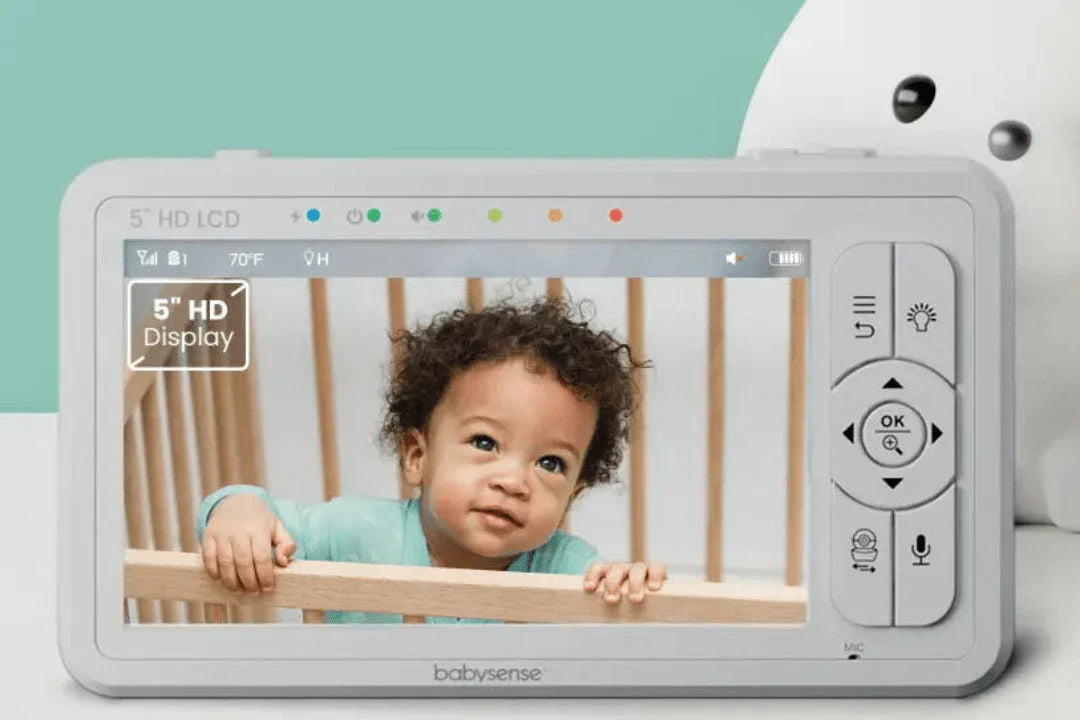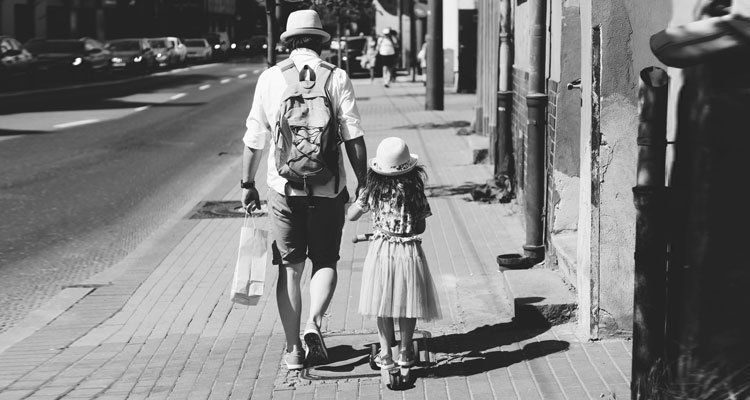Have you ever wondered how long to use baby monitor before it becomes unnecessary? As parents, we rely on baby monitors for peace of mind, ensuring our little ones are safe while they sleep. But at what point does a baby monitor go from being a helpful tool to an unnecessary habit? Some parents stop using one early, while others continue well into the toddler years—but how do you know what’s right for your child?
In this guide, we’ll explore the ideal duration for using a baby monitor, considering factors like sleep safety, developmental milestones, and parental comfort. We’ll also share expert recommendations, real-life experiences from other parents, and tips on transitioning to more independent sleeping arrangements. By the end, you’ll have a clear understanding of when to stop using a monitor, what alternatives you can consider, and how to ensure your child’s safety as they grow. Keep reading to make the best choice for your family’s needs!

What is a Baby Monitor?
A baby monitor is a useful device designed for parents to keep an eye on their little ones from a distance. It allows caregivers to listen to or see their baby’s activities while they are in another room or even in the backyard. Baby monitors come in various types, such as audio, video, & smart monitors that connect to your smartphone or other devices. They can also feature night vision, temperature sensors, & two-way talk capabilities. The goal of using a baby monitor is to provide peace of mind for parents. The need for a baby monitor often arises during the initial months after bringing the baby home, as it can help monitor sleeping patterns & any sudden movements or noises made by the infant.
How Long Should You Use a Baby Monitor?
The question of how long to use a baby monitor often varies from family to family. Many parents start using baby monitors shortly after the baby is born & continue until the child is old enough to sleep independently. Typically, this might be around 2 to 4 years of age, but it greatly depends on the child’s temperament & parental comfort. Some parents find it beneficial to use a monitor until the child is at least 3 years old, while others may choose to keep it longer for various reasons, such as ongoing sleep issues or the need to monitor older children in different environments. For many, the transition away from a baby monitor happens organically as they develop confidence in their child’s ability to sleep through the night & independently.
Benefits of Using a Baby Monitor
Using a baby monitor has several benefits that can be advantageous for new parents. These devices provide real-time feedback, ensuring parents can respond quickly if their baby stirs or cries. Some primary benefits include:
- Peace of Mind: Parents can check on their baby without needing to enter the room.
- Safety: Baby monitors can help parents ensure their child is safe while they are busy in the home.
- Flexible Monitoring: Various monitors allow parents to check in even when in different parts of the house.
In addition to these advantages, many parents enjoy advanced features such as temperature sensors, allowing them to monitor the nursery’s climate. Some monitors even have app connectivity, enabling them to check on their baby while out of the house. Overall, a baby monitor can significantly enhance a parent’s ability to care for & monitor their child comfortably.
Factors Influencing the Duration of Monitor Use
Several factors can influence how long parents choose to use a baby monitor. Here are some significant considerations:
| Factor | Consideration |
|---|---|
| Child’s Age | As children grow & develop independence, the necessity of a baby monitor may decrease. |
| Sleeping Habits | For children who frequently wake or have trouble sleeping through the night, continued monitor usage can be beneficial. |
| Home Environment | Homes with multiple levels or little visibility may prompt parents to continue using monitors longer. |
| Personal Comfort | Some parents may feel more at ease using a monitor for an extended period, regardless of the child’s age. |
Ultimately, each family’s situation is unique, making it essential for parents to consider their specific circumstances & preferences in deciding how long to utilize a baby monitor.
Changing From a Baby Monitor to Independence
Transitioning from using a baby monitor to allowing a child to sleep without one can be a gradual process. Many parents choose to begin with short periods where the monitor is turned off. Here are a few steps parents can take:
- Start by monitoring during nap times only, allowing parents to gauge how their child sleeps.
- Encourage independence by allowing the child to fall asleep on their own for a few nights.
- Gradually disconnect the monitor during the night, offering support if the child continues to wake up.
This gradual approach helps parents feel secure in their child’s independence while allowing the child to adapt to being alone at night. Each step taken marks progress toward reducing reliance on the monitor & fosters the child’s confidence in sleeping alone.
Safety Recommendations While Using Baby Monitors
While baby monitors are fantastic tools for parents, it’s crucial to use them safely. Here are some recommendations for ensuring secure usage:
- Always place audio monitors away from the crib or sleeper to avoid any cords posing a risk.
- If using a video monitor, ensure that the camera is securely mounted & out of reach of the child.
- Regularly check for software updates for smart monitors to protect against security vulnerabilities.
Safeguarding your baby’s environment also extends beyond just monitor placement. It’s also wise to utilize features like motion sensors to alert parents of unusual activity or disturbances in the crib. By maintaining awareness of safety protocols, parents can utilize their baby monitor effectively without compromising their child’s safety.
Shared Experiences with Baby Monitors
As a new parent, I remember my initial experience with a baby monitor vividly. I decided to use it at around two months after my baby’s birth. The sense of security it provided during nap time was invaluable. I distinctly recall one instance when my baby began to cough in her crib. Thanks to the monitor, I was alerted immediately, allowing me to rush to her side before she became overly distressed. As she grew & started sleeping longer through the night, I felt less reliant on the monitor, eventually deciding to phase it out around her second birthday. Each family is unique, & while I found my experience reassuring, it speaks to the broader context of how long to use a baby monitor. Every parent’s journey is influenced by their child’s needs & their comfort levels.
Transitioning to Alternative Monitoring Options
After deciding to discontinue using a traditional baby monitor, some parents explore alternative monitoring options. Here are a few viable alternatives:
| Alternative Option | Description |
|---|---|
| Smart Home Monitors | Devices that can be integrated into the smart home system, providing flexibility & additional features. |
| Wearable Monitors | Wearable technology that tracks a child’s activity & sleep patterns while providing alerts. |
| Location Tracking Devices | Devices such as GPS trackers that can help keep tabs on older children when they are exploring. |
Many parents find that these alternatives allow them to maintain a level of awareness regarding their child’s well-being without the constant need for a traditional monitor. Each of these options fosters a sense of security while accommodating the growing independence of the child.
Expert Opinions on Baby Monitor Duration
The opinions of experts can assist parents in determining the best duration for using baby monitors. Pediatricians frequently recommend monitoring until the child is consistently sleeping through the night. Chelsie Wisozk provides insight:
“Relying on a baby monitor can be beneficial, but knowing when to transition away is equally important for both child & parent.”
Based on professional advice, many parents find that transitioning out of the baby monitor phase occurs anywhere between 18 months & 3 years, depending on various factors discussed above. Engaging with a child’s pediatrician can yield tailored advice, allowing parents to make a personalized decision that aligns with their specific circumstances & their child’s development.
:max_bytes(150000):strip_icc()/GettyImages-597318727-f8b23ba119684f189b5a082ba55fc187.jpg)
How long should you use a baby monitor?
It’s generally recommended to use a baby monitor until your child is about 2 to 3 years old, or until they are able to communicate their needs effectively. Be that as it may, some parents may choose to use it longer based on their comfort level & the child’s activity.
When should you stop using a baby monitor?
You can consider stopping the use of a baby monitor when your child has transitioned to a toddler bed & no longer requires constant supervision during sleep. This can typically happen around the age of 2 or 3.
Is a baby monitor necessary for older babies?
For older babies, many parents feel less need for a monitor, especially if the child is sleeping through the night. Be that as it may, it can still provide peace of mind if the parent is in a different room or if the child is particularly active.
What age can a baby sleep without a monitor?
Most parents find that by the age of 2 to 3 years, their child can sleep without a monitor. At this age, children typically have developed better sleeping patterns & are more mobile.
Can I continue to use a baby monitor for toddlers?
Yes, you can continue to use a baby monitor for toddlers if it helps you feel more secure. Some parents choose to use monitors until their children are ready to sleep independently without any concerns.

Conclusion
Deciding how long to use a baby monitor depends on your child’s age, sleeping habits, and your comfort level. Many parents find monitors essential during infancy for peace of mind, while others continue using them into the toddler years for added security.
As your child grows and gains independence, you may transition away from a monitor, especially if they sleep through the night and communicate their needs. Safety is also a key factor—proper placement and responsible use ensure a monitor remains a helpful tool rather than a source of anxiety.
Ultimately, the right time to stop using a baby monitor varies for each family. Trust your instincts and adjust based on what makes you and your child feel secure. If you’re considering alternative monitoring options, explore different solutions that fit your needs as your child grows.





